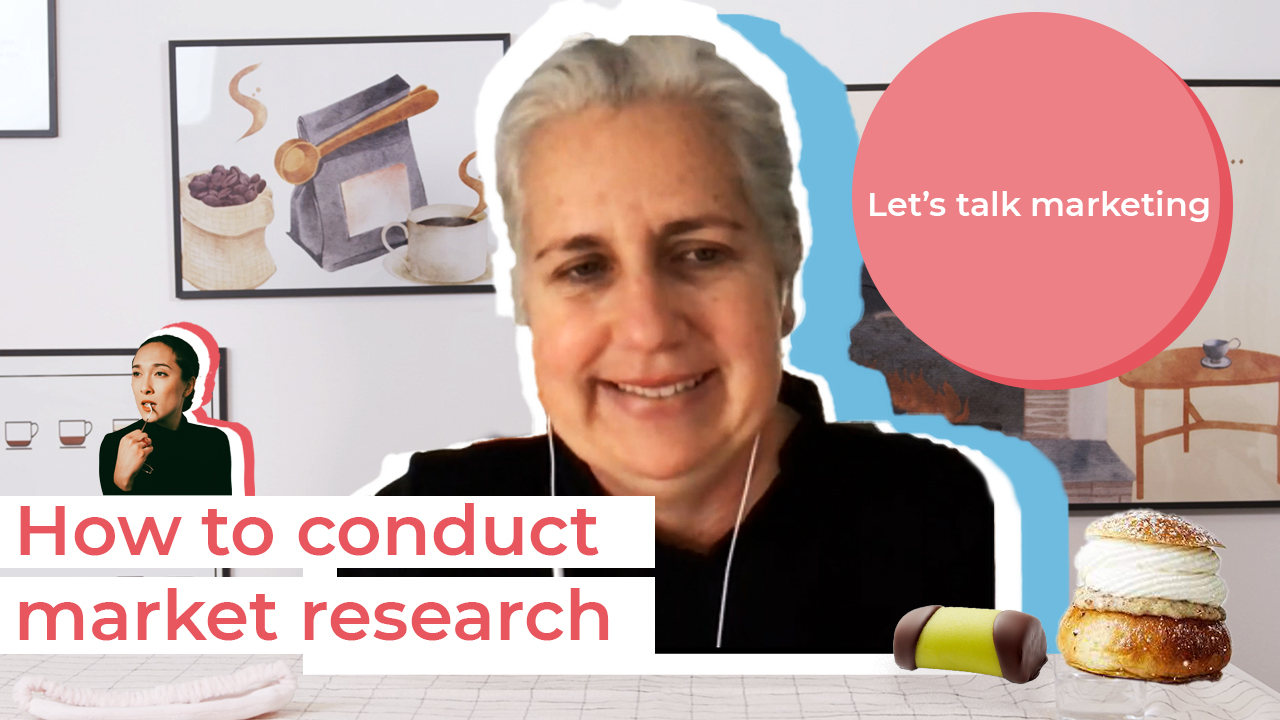Market research can take many forms and provide lots of rich data. Understanding how to execute that research and maximize the insights can be tricky though.
First, it’s important to understand the different types of market research that are available to you — and we’re talking about original research, here. Not the sort of desktop “Google research” that anyone can do.
To get to the bottom of it all, we spoke with ClareMcDermott, founder of Ravn Research. She dropped some expert knowledge about market research, its benefits, and potential pitfalls. Plus, she shared a secret Chilean delicacy that is her go-to fika fix.
Kicking things off, she informed us that there are, essentially, three main types of research categories: analyzing public data, quantitative surveys, and interview-based qualitative surveys.
Public data analysis is the easiest, and many times the cheapest, to implement. By reviewing data through government projects, NGOs, or reputable private providers like Statista, you can quickly gather verified data and begin analyzing based on your hypothesis.
When you’re ready to step up your market research game, though, it’s time to start thinking about surveys. Quantitative and qualitative surveys can each be great depending on the use case. When trying to reach a well-known, easy to reach demographic, executing a quantitative survey can give you lots of hard numbers to work with.
When it comes to lesser-known audiences, or audiences that are reticent to answer a qualitative survey, an interview-based approach may be the answer.
It all depends on what kind of insights you are trying to discover and what your goals are for the market research.
Speaking of… let’s talk about those goals.
Original research can be a gold mine for your brand. Obviously, publishing an original market research report can help to increase web traffic. However, these reports can also open up speaking opportunities and help position your brand (and your people!) as thought leaders within the industry.
Additionally, one chunky report can be used in loads of different ways by your content marketing team. Think about it. There are data points that nobody else has.
“I always find the content team loves what we do, because (if you do it well) you can give them content for a full year,” said Clare. “There are so many threads to pull at if it’s done well.”
Sometimes your market research may even be picked up by major media outlets. For instance, Clare was working with a client on some original research for first-generation high-net-worth individuals (the first in their family to become wealthy) that was picked up by the New York Times. She cautions that this is more the exception than the norm, though.
“That’s very atypical, because big media companies are usually suspicious of brands publishing research,* she said. “However, you will get picked up by industry news.”
On the topic of misconceptions about the potential of market research, she also touched on some of the most common mistakes that clients make going into a project.
“The biggest mistake that I see, by far, is what I call ‘taking inventory’ with research,” she said.
Essentially, this occurs when clients cast too wide of a net when crafting surveys or collecting public data. They try to tick every box, rather than focus on granular topics, which will yield richer results.
To avoid this pitfall, Clare recommends focusing on what you (and your original research) should be known for. What are your hypotheses? With those assumptions, which are the most likely to be answered through the type of market research that you are undertaking.
It’s also important to ask yourself what your ideal headline is on page one of the finished report.
Another mistake that Clare sees often is that the research projects are led by teams of people who have never executed research of this kind before. In these cases, she strongly recommends hiring an experienced consultant. The extra cost can save you money in the long term.
Beyond project leadership, she also recommends having a writer and designer on hand who know how to work with data and pull a compelling story out of it.
“Make sure you have someone who knows how to not repeat every single line item of the findings, but why matters,” she said. “Put it in context.”
This skilled presentation of the findings is an incredibly important step. You don’t want to be in a situation where you’ve spent loads of money in building and executing market research only for your team to deliver a story-less, sub-par report in the end.
It’s all a lot to take in, and worth it to watch the full video. She did, however, leave us with a few tips for those thinking of diving into the world of original research:
- Take an honest look at the skills within your team. Do you need to contract external expertise?
- Invest in the research science component (the survey design).
- Don’t underestimate the cost to properly run a survey panel.
Clare placed a particular emphasis on that last tip. In many B2B scenarios, you may want to survey their own existing audience — many times as a cost-savings measure. You need to question whether the correct demographic is actually represented, though. What biases or socio-economic factors are (and should be) represented?
In the end, the cost of a panel will often cost as much as the fees for the agency executing your market research. It’s important to factor this into your plan from the beginning in order to achieve the best, richest results.
For even more tips, and to hear more about Clare’s traditional “Once” (the Chilean equivalent of fika), check out the video above.
